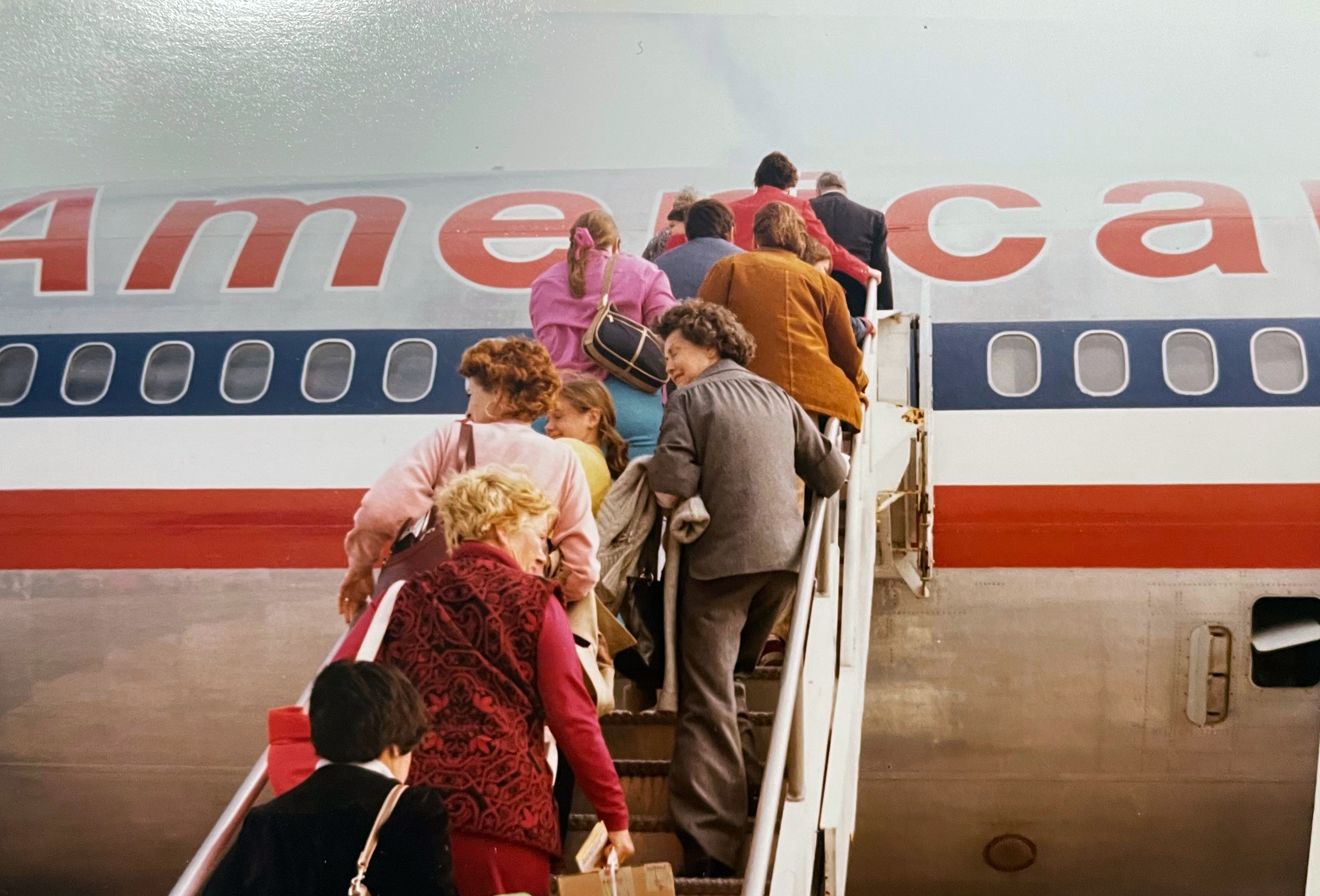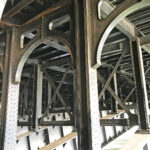Memorial Day

May 27, 2024
IT WAS THE FRIDAY of Memorial Day weekend, 1979. I was in seventh grade, and a diehard airplane buff. It was a warm and sunny afternoon, and I was sitting in the dining room of the house I grew up in when the phone rang. It was a friend from school. He told me to turn on the television.
It had been a sunny day in Chicago, too, when just after 3 p.m. American Airlines flight 191, a McDonnell Douglas DC-10 with 271 people on board, roared down runway 32R at O’Hare International Airport, headed for Los Angeles. Just as the plane lifted off, its left engine broke loose. The entire engine, which weighed about eight thousand pounds, together with its connecting pylon and about three feet of the wing’s leading edge, flipped up over the wing and slammed back onto the runway.
As the engine ripped away, it severed hydraulic lines, releasing the hydraulic pressure that held the wing’s leading edge slats, deployed to provide critical lift during takeoff, in place. The slats then retracted, causing the left wing to stall. The plane rolled sharply to the left and plunged to the ground, disintegrating in a trailer park just beyond the airport perimeter.
Everybody aboard was killed, along with two people on the ground. With 273 fatalities, the crash of flight 191 was, and remains, the deadliest air disaster in U.S. history.
Descriptions of the accident are jarring enough. But we can see the horror, too, quite literally. Because a man named Michael Laughlin captured what might be the most haunting aviation photographs ever taken: a sequence of pictures showing the stricken jet literally sideways in the sky, in the throes of that ghastly twist to the left. And then the explosion. I don’t have permission to republish the photos here, but Google will oblige your queries.
When pylon cracks were found in several other DC-10s, the entire U.S. fleet was grounded for five weeks by the FAA. American, United, Northwest, Western and Continental were forced to pull all of their DC-10s from service. Foreign carriers were banned from flying DC-10s into the country.
NTSB investigators would eventually lay most of the blame on faulty maintenance practices and FAA oversight thereof. American — and other airlines, too — had been using a workaround procedure that caused unseen cracks to form in the engine pylon. But design flaws played a role as well. Unlike other planes, the DC-10’s wing slats were held in the extended position by hydraulic pressure, not by a mechanical lock. When the detached engine sheared the hydraulic lines, the slats retracted and the left wing essentially ceased flying.
The stall warning system also lacked a critical redundancy. It was powered only from the left-side electrical system, which had failed when the engine broke away. Thus, the pilots never realized their jet was stalling. Had captain Walter Lux and his crew understood, aerodynamically, what was happening, it’s very possible — likely, even — the catastrophe would’ve been averted.
I’d flown with my family on an American DC-10 on a vacation to Bermuda only two months before O’Hare. In the photo below you can see my mother (in pink), my sister (yellow), and my grandmother (gray), climbing the airstairs on the Bermuda tarmac. It’s possible — who knows — this was the same jet that would plummet to earth on May 25th.

The DC-10 had a checkered past even before O’Hare. In 1974, the horrific crash of Turkish Airlines flight 981 outside Paris was caused by a defectively designed cargo door and a poorly reinforced cabin floor. McDonnell Douglas, in a race wtih rival Lockheed to produce a three-engined widebody jet, had hurriedly built a plane with a door that it knew was unsound; then, in the aftermath, they tried covering the whole thing up. It was reckless, maybe criminal.
The plane’s reputation was such that some people refused to ride on one. This included one passenger booked on AA 191 who, learning that he’d be boarding a DC-10, switched his travel plans at the last minute, effectively saving his life.
After the 191 crash, American began swapping out the “DC-10 Luxury Liner” decals from the plane’s nose, replacing them with a more generic “American Airlines Luxury Liner.”
So where am I going with this? I’m not sure, to be honest. But here on the 45th anniversary of flight 191, on Memorial Day no less, the story feels important.
And it hardly needs saying that what happened to the DC-10 reminds us in no small way of the ongoing drama of Boeing’s 737 MAX. The similarities are uncanny: multiple crashes, a grounding, a manufacturer accused of negligence and shoddy design.
In the case of the DC-10, fines were paid, lawsuits were settled, technical fixes were put in place. (Among the lawsuits was one against McDonnell Douglas filed by the family of Captain Lux.) The plane soldiered on and Douglas regained the public’s trust (mostly; the 1989 United crash at Sioux City was another black eye). Time works wonders that way. The Clash would even shout out to the DC-10 on “Spanish Bombs,” from the London Calling album.
How things will pan out for the MAX, and for Boeing, remains to be seen.
For a thirteen year-old airplane nut in Boston, the most exciting thing about the FAA grounding in ’79 was a temporary influx of exotic airplanes into Logan. For a month carriers would substitute other types. United’s DC-10 to Chicago became a 747 — the only 747 I’d ever seen in that carrier’s livery. Swissair brought in DC-8s, Lufthansa sent 707s. And so on. New planes, new colors. I couldn’t get to the airport fast enough.
You can always count on a kid, I guess, to find a silver lining in something so awful as a plane crash.
The DC-10 wasn’t the prettiest plane of its day, lacking the grace of its main competitor, the Lockheed L-1011 TriStar. Both were three-engine widebody jetliners with room for around 250 people, and both were built with a center engine mounted in the tail. But the TriStar was the sleeker by far, with that center engine integrated into the rear fuselage through a sexy, S-shaped intake duct. Douglas just jammed the engine through the base of the fin, like they didn’t know what else to do with it. For the same reason, there was no mistaking it. Few planes had a more distinctive profile.
DC-10 PHOTO BY THE AUTHOR



